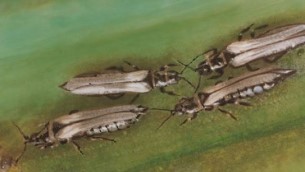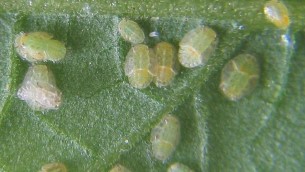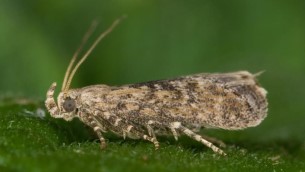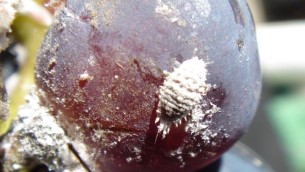Thrips
Thrips are a rasping feeding pest that can cause economic damage on several crops including avocados and stonefruit. Their feeding causes bronzing and marking on fruit surfaces reducing the marketable value of the crop.

Related Pests

Onion Thrips
Thrips tabaci
Onion thrips (Thrips tabaci) is the most serious pest of onion crops in New Zealand. Their rasping feeding causes whitening of leaves which reduces yields. However their presence in the necks of harvested bulbs and subsequent feeding damage in storage can lead to rots in storage in export shipments. The adults are small, a black colour and are winged. The larvae which cause the plant damage are thin and a white to yellow colour and are usually found in the necks of onion plants.

Tomato Potato Psyllid
Bactericera cockerelli
Tomato/Potato psyllid (Bactericera cockerelli) is a devastating pest of potato and tomato crops. A sucking pest whose feeding on foliage causes yellowing,
purpling and cupping of leaves, stunting of plants and reduces yields. The pysllid can also transmit Liberibactor, a bacterium like organism that affects the internal vascular transport system of plants. This negatively disrupts potato tuber quality often resulting in the “zebra chip” effect in processing potatoes.

Potato Tuber Moth
Phthorimaea operculella
Potato tuber moth (Phthorimaea operculella) is an issue for potato growers throughout New Zealand. The larvae can mine leaves but the major challenge is in the dry season when the soil cracks and adults can directly access and lay eggs on the tubers. The larvae then burrow into the tubers rendering them unmarketable and causing rots in storage.

Mealy Bug
Mealybugs are significant pests of grapes and apples in New Zealand. Controlling mealybugs in grapes is very important as they transmit Grape Leaf Roll Virus (GLRV3). Mealybugs are sap sucking hidden pests that prefer sheltered and protected sites on plants. Often the first indication of their presence is sooty mould which grows on the honeydew produced from mealybug feeding.






